Dreams have fascinated humanity for centuries, inspiring both awe and curiosity. As individuals, we often wonder about the secret messages hidden within our dreams and their deeper meanings. But have you ever stopped to consider how culture influences the interpretation of those elusive nocturnal visions? Exploring the Influence of Culture on Dream Interpretation delves into this intriguing subject, unraveling the intricate connections between culture and the symbolism of dreams. From the diverse interpretations of love and success to the role of spirituality and religion, this article uncovers the profound impact that cultural beliefs and practices have on our nocturnal imaginings. So, grab your passport and prepare to embark on a fascinating journey through the intersection of culture and dream analysis.
The Basics of Dream Interpretation
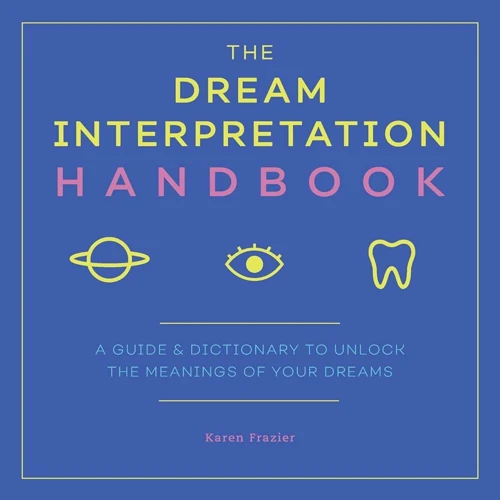
Dream interpretation is the art of deciphering the hidden meanings and symbols within our dreams. serve as a foundation for understanding the complex world of dreams. Dreams are a mixture of thoughts, images, and sensations that occur during sleep, and they often reflect our subconscious desires, fears, and experiences. To interpret dreams effectively, it is crucial to pay attention to the details, emotions, and themes present in the dream. Keeping a dream journal, where you record your dreams upon waking, can be a valuable tool in unlocking their hidden messages and patterns. It’s important to note that dream interpretation is highly subjective, and there are no universal meanings for specific dream symbols. However, understanding the basics of dream interpretation can unleash our creative potential and provide insight into our waking lives. So, let’s venture into the world of dreaming and discover the fascinating realm that lies within.
What are dreams
When exploring the question “What are dreams?” it is essential to understand that dreams are a fascinating phenomenon that occurs during sleep. Here are some key characteristics and theories about dreams:
- Definition: Dreams are a series of images, emotions, sensations, and ideas that occur involuntarily in the mind during sleep.
- REM Sleep: Dreams primarily occur during the Rapid Eye Movement (REM) phase of sleep, which is characterized by increased brain activity and vivid dreaming.
- Content: Dream content can vary widely and may include familiar people, places, or events as well as fantastical and surreal elements.
- Interpretation: Dreams can be interpreted in various ways, including as a reflection of unconscious thoughts, emotions, desires, or memories.
- Psychoanalytic Perspective: According to Sigmund Freud, dreams are a window into the unconscious mind, allowing suppressed desires and conflicts to be expressed symbolically.
- Cognitive Perspective: From a cognitive standpoint, dreams serve as a method for processing and consolidating information, emotions, and memories from waking life.
Understanding the nature of dreams helps us appreciate their complexity and the insights they can provide into our subconscious mind. Whether you’re interested in interpreting your dreams for personal growth or tapping into their creative potential, keeping a dream journal can be a valuable practice. This allows for the documentation and analysis of dream patterns and themes, empowering individuals to gain a deeper understanding of their dreams and potentially unleash their creative potential.
The importance of dream interpretation
The importance of dream interpretation lies in its potential to offer valuable insights into our subconscious minds and provide a deeper understanding of ourselves. Dreams are not merely random images and events that occur during sleep; they hold significant meaning and can serve as a powerful tool for self-reflection and personal growth. Dream interpretation allows us to tap into the hidden realms of our minds, where our deepest desires, fears, and unresolved conflicts reside.
By analyzing the symbols, emotions, and patterns in our dreams, we can gain valuable information about our thoughts, feelings, and experiences that may be difficult to access in our waking lives. Dream interpretation can help us uncover subconscious beliefs and fears that may be holding us back, as well as reveal hidden desires and aspirations. It can provide clarity and guidance in navigating life’s challenges and making important decisions.
Dream interpretation can be a transformative and therapeutic process. It can help us process and heal from past traumas, explore unresolved issues, and gain a greater sense of self-awareness. Through dream analysis, we can gain access to our unconscious mind, allowing us to address and integrate aspects of ourselves that may have been repressed or overlooked.
Additionally, dreaming has been linked to enhancing problem-solving skills and promoting creativity. Dreams often present us with novel and imaginative scenarios, allowing us to explore alternative perspectives and think outside the box. By harnessing the power of our dreams, we can unlock our creative potential and find innovative solutions to challenges we may face.
The importance of dream interpretation lies in its ability to unlock the mysteries of our inner world and provide guidance, healing, and growth. So, let us dive deeper into the fascinating realm of dreams and discover the incredible benefits that await us.
The Cultural Lens
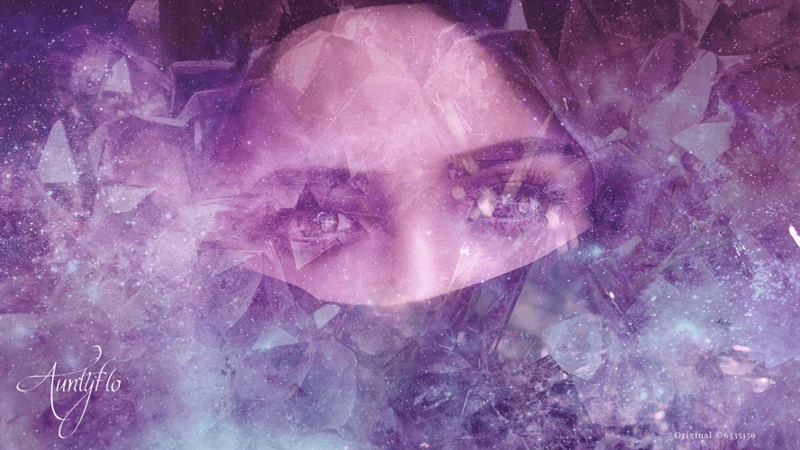
The Cultural Lens provides a fascinating perspective through which to understand dream interpretation. Cultures around the world have unique traditions, beliefs, and symbols that shape the way they interpret dreams. Cultural variations in dream symbolism are vast and diverse, reflecting the collective experiences and values of a particular society. Whether it’s Eastern cultures embracing the interconnectedness of nature and dreams, Western cultures emphasizing individualism and personal achievement, or indigenous cultures relying on ancestral wisdom and spiritual guidance, each cultural lens offers a distinct approach to interpreting dreams. Understanding these cultural influences allows us to gain a deeper appreciation for the rich tapestry of human experience and the role it plays in shaping our dreams. By examining cultural context, we can broaden our understanding of dream symbolism and potentially harness the power of dreaming to enhance problem-solving abilities and personal growth. So, let’s dive into the cultural mosaic of dream interpretation and explore the science behind lucid dreaming and its potential benefits.
Cultural variations in dream symbolism
Cultural variations in dream symbolism shed light on how different cultures perceive and interpret the symbols and imagery found in dreams. While some symbols may have universal meanings or associations, cultural factors heavily influence the specific symbolism attached to certain objects, actions, or events in dreams. For example, in Western cultures, a dream featuring a white dove may be seen as a symbol of peace and purity, stemming from religious and cultural connotations. On the other hand, in some Indigenous cultures, a white dove may hold different significance, perhaps representing a specific spiritual message or a connection to nature. These variations emphasize the importance of considering cultural context when analyzing dreams. Additionally, cultural beliefs and practices shape the interpretation and understanding of dream symbolism. For instance, in certain Eastern cultures, dreams are often seen as a way to connect with ancestors or receive spiritual guidance. As a result, symbols related to ancestors or spirituality may hold greater significance in dream interpretation within these cultures. Exploring the cultural variations in dream symbolism helps broaden our understanding of how different societies perceive and construct meaning from their dream experiences. By recognizing the cultural lens through which dreams are interpreted, we gain a more comprehensive understanding of the rich tapestry of dream symbolism across the world. To learn more about how dreaming can enhance problem-solving, click here.
How cultural beliefs shape dream meanings
Cultural beliefs play a crucial role in shaping the meaning and interpretation of dreams. Different cultures have diverse beliefs, myths, and symbols associated with dreams, which greatly influence how individuals within those cultures understand and interpret their own dreams. Cultural beliefs can impact the way dreams are perceived, valued, and integrated into daily life. For example, in some cultures, dreams are considered sacred and carry spiritual significance, while in others, dreams may be seen as mere random mental activity during sleep. Cultural beliefs can also dictate the level of importance given to certain dream symbols or themes. For instance, in Western cultures, dreams featuring success, ambition, and material wealth are often regarded positively and can be seen as indicators of personal achievement, whereas in some Eastern cultures, dreams relating to humility and spiritual growth may be viewed as more valuable. These cultural lenses color the interpretation of dreams and shape the meaning attributed to specific dream elements. Additionally, cultural beliefs can influence the extent to which individuals engage in practices such as lucid dreaming, where individuals become aware that they are dreaming and can actively participate in the dream experience. Some cultures may encourage and embrace the exploration of lucid dreaming for its potential benefits, such as problem solving and personal growth, while others may see it as an interference with the natural order of dreams. Understanding how cultural beliefs shape dream meanings provides valuable insight into the rich tapestry of human experiences and the varied perspectives on the world of dreams. As we continue to delve into the influence of culture on dream interpretation, let’s explore the fascinating science behind lucid dreaming and its potential benefits.
Cultural Dream Interpretation Practices

Cultural Dream Interpretation Practices highlight how different cultures around the world approach the analysis and understanding of dreams. Each culture brings its unique set of beliefs, symbols, and rituals to the interpretation process, shaping the meanings and significance attributed to dreams. In Eastern culture, dreams are often seen as a gateway to the spiritual realm, with emphasis placed on meditation and symbolism. Western culture, on the other hand, tends to focus more on psychological interpretations, drawing connections between dreams and the dreamer’s subconscious mind. Indigenous cultures often view dreams as messages from ancestors or spirits, incorporating them into daily life and decision-making processes. These diverse approaches to dream interpretation demonstrate the rich tapestry of human culture and provide valuable insights into the multifaceted nature of dreams. So, let us delve deeper into the realms of cultural dream practices and explore the fascinating ways in which different societies connect with their dreams.
Eastern culture
Eastern culture holds a rich and ancient tradition when it comes to dream interpretation. In many Eastern societies, dreams are believed to be more than mere random images conjured by the mind during sleep; they are seen as messages from the divine or ancestors. One of the key principles in Eastern dream interpretation is the concept of interconnectedness between the dreamer and the universe. Dreams are considered a window into the spiritual realm, and their symbolism is often associated with philosophical or religious teachings. Eastern cultures, such as those influenced by Hinduism, Buddhism, and Taoism, emphasize the importance of self-reflection and introspection in deciphering dream meanings. Some specific symbols that hold significance in Eastern culture include lotus flowers, dragons, and celestial beings. Dreamers in these cultures often seek guidance from spiritual leaders or consult ancient texts to interpret their dreams and gain insight into their personal growth and destiny. This approach to dream interpretation in Eastern culture offers a unique perspective on the connection between the dream world and our waking reality. To delve deeper into the fascinating world of dreams and their potential benefits, you can explore the topic of lucid dreaming, a phenomenon that is often of interest in Eastern cultures as a means of gaining spiritual insights and self-awareness.
Western culture
Western culture encompasses a broad range of beliefs, values, and practices when it comes to dream interpretation. Here are some key aspects of dream interpretation within Western culture:
- Freudian interpretation: Sigmund Freud, a pioneer in psychology, proposed that dreams are a pathway to the unconscious mind. In Western culture, his theories heavily influenced the understanding and analysis of dreams. Freud believed that dreams were symbolic representations of repressed desires and unconscious conflicts.
- Jungian interpretation: Carl Jung, another influential figure in psychology, introduced the concept of the collective unconscious, suggesting that dreams could contain archetypes and universal symbols that are shared across cultures. Jung believed that dream interpretation could reveal insights into the individual psyche and the collective human experience.
- Symbolic meanings: In Western culture, dreams are often seen as symbolic representations of personal experiences and emotions. Common dream symbols such as flying, falling, or being chased often carry metaphorical meanings. Through analysis and reflection, individuals explore the personal significance of these symbols in relation to their own lives.
- Therapeutic approach: Within Western culture, dream interpretation is often used as a therapeutic tool. Psychologists and therapists may work with individuals to explore their dreams and uncover hidden emotions or unresolved issues. This process can provide valuable insights into the individual’s mental and emotional well-being.
Dream interpretation in Western culture is a diverse and evolving field that draws from various psychological theories and approaches. While there are general themes and symbols that may be recognized across cultures, the specific interpretation of dreams is highly individual and influenced by personal experiences and cultural background.
Indigenous cultures
Indigenous cultures have a rich and diverse approach to dream interpretation, with beliefs and practices that vary across different communities. Dreaming holds great significance in many indigenous cultures, as dreams are often seen as a channel for communication with ancestors, spirits, and the natural world. In many indigenous communities, dreams are considered sacred and are used for guidance, healing, and spiritual growth. The interpretation of dreams within these cultures is deeply rooted in their specific traditions, rituals, and cosmologies. Dream symbols and meanings can vary widely, influenced by the unique cultural context and the individual’s personal experiences within their community. For example, in some indigenous cultures, specific animals or natural elements may hold significant symbolism in dreams, representing different spiritual energies or messages from the divine. Dream interpretation in indigenous cultures often involves seeking guidance from elders, shamans, or spiritual leaders who possess the wisdom and knowledge to interpret these sacred visions. It is important to approach indigenous dream interpretation with respect and understanding, recognizing the cultural diversity and nuances that shape these practices.
Cultural Influences on Dream Themes
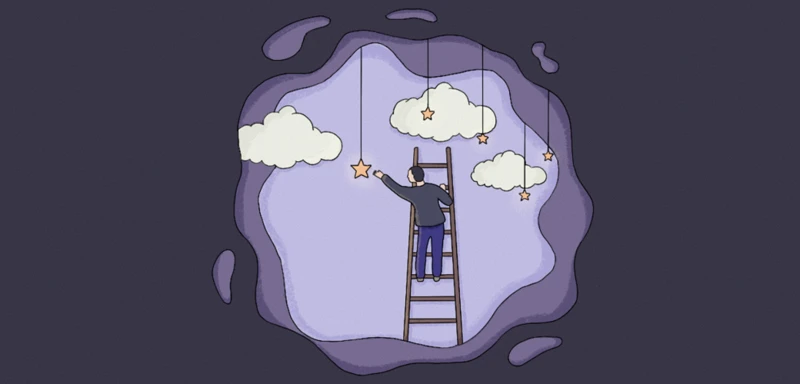
Dreams serve as a reflection of our cultural values, beliefs, and experiences. Cultural influences shape the themes that emerge in our dreams, providing a unique lens through which we perceive the world. Love and relationships are common dream themes found across cultures, reflecting the importance of human connection in our lives. Success and ambition also feature prominently in dreams, mirroring the drive for achievement prevalent in many cultures. Fear and anxiety, stemming from societal pressures or cultural norms, frequently manifest in our dreams as well. Exploring the cultural influences on dream themes allows us to gain a deeper understanding of how our cultural backgrounds shape the scenarios and emotions that play out in our dreams. So, let’s delve into the captivating realm of cultural dream interpretation and unravel the rich tapestry of themes that color our dreamscapes.
Love and relationships
Love and relationships are recurring themes in dreams across various cultures. In dream interpretation, symbols and scenarios related to love and relationships often reflect our subconscious desires, conflicts, and experiences in our waking lives. Cultural influences play a significant role in shaping the interpretation of these dream elements. In Western culture, dreams about love and relationships are often associated with romantic notions, such as meeting a soulmate or experiencing passionate encounters. On the other hand, Eastern cultures may interpret these dreams with a more spiritual or philosophical lens, emphasizing the harmony and balance in relationships. Indigenous cultures may view dreams about love and relationships as interconnectedness with nature and the community. The interpretation of such dreams is also influenced by individuals’ personal experiences and cultural beliefs surrounding love and relationships. Whether it’s longing for love, resolving relationship conflicts, or seeking guidance, dreams about love and relationships provide a window into our emotional landscapes and desires, and cultural perspectives further shape their significance and interpretation.
Success and ambition
When it comes to the interpretation of dreams related to success and ambition, cultural influences play a significant role. In Western culture, dreams about achieving success and reaching personal goals are often seen as positive signs of ambition and drive. They may indicate a desire for recognition, power, or financial prosperity. In contrast, Eastern cultures may view dreams of success and ambition more cautiously, recognizing the potential pitfalls of excessive ambition and valuing modesty and contentment. In Indigenous cultures, dreams about success and ambition may be interpreted in the context of the individual’s role within the community and their contribution to the greater good. It’s essential to consider cultural nuances and societal values when analyzing dreams related to success and ambition. These dreams can provide valuable insights into personal aspirations, motivations, and the cultural expectations that shape our definition of success. By understanding the significance of success and ambition within different cultures, we gain a deeper understanding of the complex relationship between dreams and the pursuit of achievement in our waking lives.
Fear and anxiety
Fear and anxiety are common emotional themes that manifest in our dreams, and their interpretation can vary significantly across different cultures. In some cultures, dreaming of fear and anxiety may be seen as a harbinger of impending danger or a warning sign that requires immediate action. On the other hand, in certain indigenous cultures, dreams featuring fear and anxiety may be interpreted as messages from ancestors or spirit guides, guiding individuals to confront their fears and overcome obstacles in their waking lives. The symbols associated with fear and anxiety in dreams can also be culturally influenced. For example, snakes may symbolize fear and trepidation in Western cultures, while in Eastern cultures, snakes can indicate transformation and rebirth. Similarly, dreams of falling may represent fear and loss of control in some cultures, while in others, it may symbolize a positive change or a leap of faith. Understanding the cultural context is crucial when interpreting dreams related to fear and anxiety, as it provides insight into the unique cultural beliefs and associations surrounding these emotions. By unraveling the cultural influences on dream themes of fear and anxiety, we gain a better understanding of how our individual and collective experiences shape the symbolism and interpretation of these emotions in the realm of dreams.
The Role of Spirituality and Religion

The role of spirituality and religion in dream interpretation is undeniable, as it adds a deeper layer of meaning and significance to our nocturnal experiences. Dreams have long been seen as a connection to the divine, a realm where messages from a higher power can be conveyed. Religious symbolism often finds its way into dreams, with symbols such as angels, demons, saints, or religious figures making appearances. These symbols can be interpreted based on the individual’s religious beliefs and cultural context, offering guidance or insight into spiritual matters. Additionally, shamanic and mystical traditions from various cultures provide unique perspectives on dream interpretation, incorporating rituals, ceremonies, and practices that aim to connect with the spiritual realm through dreams. Exploring the role of spirituality and religion in dream interpretation can deepen our understanding of the spiritual aspects of our lives and foster a greater connection to the divine.
Religious symbolism in dreams
Religious symbolism in dreams offers a fascinating glimpse into the intersection of spirituality and the subconscious mind. Throughout history, individuals from various religious backgrounds have reported vivid dreams containing religious figures, sacred texts, and symbols. These dreams often hold deep personal significance and are regarded as messages from a higher power or a connection to the divine. For example, in Christian culture, dreaming of angels may be seen as a sign of protection or guidance, while dreaming of a devil or demonic figure could be interpreted as a warning of temptation or evil influences. Similarly, in Hinduism, dreaming of deities such as Lord Krishna or Goddess Lakshmi can signify blessings or divine intervention in one’s life. These religious symbols in dreams can hold deeply meaningful interpretations based on an individual’s personal beliefs and experiences. It is important to approach the interpretation of religious symbolism in dreams with respect and sensitivity, as the meanings can vary greatly depending on cultural context and religious traditions. Whether these dreams are viewed as spiritual experiences, reflections of personal beliefs, or subconscious manifestations of faith, they provide a unique lens through which individuals can explore their spirituality and find deeper meaning in their waking lives.
Shamanic and mystical interpretations
Shamanic and mystical interpretations play a significant role in certain cultures’ understanding of dreams. In shamanic traditions, dreams are seen as portals to other realms and hold profound spiritual significance. Shamans are believed to have the ability to communicate with the spirit world through dreams and use them as a means of receiving guidance and healing. They interpret dreams as messages from ancestors, spirits, or higher powers, providing insights into the individual’s life path and spiritual journey. These interpretations often involve symbols, animals, or natural elements that hold specific meanings within the shamanic tradition. Similarly, mystical interpretations of dreams focus on the esoteric and metaphysical aspects. Mystics believe that dreams are a connection to the divine and offer glimpses into the hidden truths of the universe. They view dreams as symbolic narratives that unfold within the subconscious mind, revealing profound spiritual truths and offering guidance for personal growth and enlightenment. In both shamanic and mystical interpretations, dreams are seen as profound sources of wisdom and guidance, inviting individuals to explore the deeper realms of consciousness and spirituality.
Dream Interpretation in Different Cultures
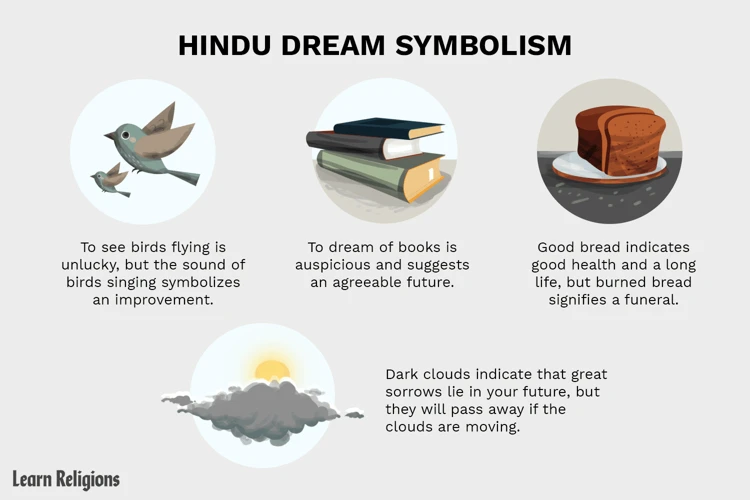
Dream interpretation varies greatly across different cultures, showcasing the rich diversity of human experience and belief systems. In Chinese culture, dreams hold great significance and are often seen as reflections of one’s soul and subconscious desires. Ancient Egyptians, on the other hand, believed that dreams were messages from the gods, offering guidance and warnings. Native American cultures view dreams as a spiritual connection to the divine and a means of gaining wisdom. Each culture brings its unique lens to dream interpretation, infusing their own symbolism, mythology, and rituals into the process. These cultural interpretations provide us with a glimpse into the collective consciousness of a society and serve as a testament to the profound impact that culture has on our understanding of dreams.
Chinese dream interpretation
Chinese dream interpretation has a rich history rooted in ancient Chinese culture and philosophy. Dreams hold great significance in Chinese tradition and are often seen as messages from the divine or ancestors. The interpretation of dreams in Chinese culture is guided by the belief in Qi, the life force that flows through everything. According to Chinese dream interpretation, dreams are a reflection of one’s inner harmony or imbalance.
In Chinese culture, certain symbols and themes hold specific meanings. For example, dreaming of a dragon is considered lucky and represents power, strength, and good fortune. Dreams of fish symbolize abundance and wealth, while dreams of a phoenix indicate new beginnings and rebirth. The interpretation of dream symbols also takes into account the Five Elements theory – wood, fire, earth, metal, and water – which represent different aspects of life and nature.
Chinese dream interpretation is deeply interconnected with the concept of yin and yang, the duality of opposing forces. Each dream is analyzed to identify the balance between these forces and to guide individuals in achieving harmony in their lives. Dream analysis also often incorporates references to Chinese mythology and folklore, as well as the Chinese zodiac and its twelve animal signs.
Dream interpretation in Chinese culture goes beyond individual symbolism and addresses the collective consciousness. Dreams are seen as a means of connecting with ancestors and the spiritual realm. They are believed to offer guidance, warnings, and insights into future events. The interpretation of dreams is influenced by various factors, including the dreamer’s age, gender, social status, and personal experiences.
In modern times, Chinese dream interpretation has evolved to incorporate Western psychological theories. Traditional methods of interpretation are often blended with Freudian and Jungian concepts to provide a comprehensive understanding of dreams in the context of contemporary Chinese society.
Whether seeking guidance, finding meaning, or exploring one’s inner self, Chinese dream interpretation offers a unique and profound approach to understanding the messages hidden within our dreams. It represents a fusion of cultural beliefs and spiritual wisdom that continues to intrigue and inspire dreamers around the world.
Ancient Egyptian dream interpretation
Ancient Egyptian civilization had a deep belief in the significance of dreams. Dreams were considered a powerful medium through which the gods communicated with humans. The Egyptians believed that dreams were a way for the divine to reveal important messages and provide guidance. Dream interpretation was an integral part of their society, and they had a detailed system for unraveling the meanings behind dreams.
In ancient Egypt, dream interpretation was practiced by specially trained individuals known as “dream priests” or “dream interpreters.” These interpreters were highly respected and held a significant role in the community. They were able to access the messages from the divine and translate them into meaningful insights for the dreamer.
The ancient Egyptians believed that dreams could foretell the future, provide warnings, and offer solutions to problems. Dream symbols played a crucial role in decoding the messages from the gods. Each symbol had a specific meaning and was associated with various aspects of Egyptian culture, mythology, and daily life.
For example, dreaming of a falcon in ancient Egypt was often seen as a positive omen, representing protection and authority. The image of a snake in a dream symbolized renewal and healing, while a crocodile signified danger or a potential threat.
Dreamers in ancient Egypt would seek the guidance of dream interpreters who would analyze their dreams and provide them with insights and advice. The interpretation process involved careful consideration of the dreamer’s personal circumstances, cultural context, and the symbolism present in the dream.
Ancient Egyptian dream interpretation was intricately connected to their religious beliefs. It was believed that dreams could connect individuals to the divine realm and offer glimpses into the afterlife. Dreams were seen as a portal through which one could communicate with the gods and gain insights into the mysteries of existence.
The practice of dream interpretation in ancient Egypt reveals the profound influence of culture and spirituality on the understanding of dreams. It highlights the significance placed on dreams as a means of divine communication and the belief in their ability to provide guidance and insight into one’s life.
Although ancient Egyptian dream interpretation may seem distant and unfamiliar to us today, it serves as a reminder of the rich cultural diversity in the way dreams have been understood and valued throughout history.
Native American dream interpretation
Native American dream interpretation has a rich and vibrant history, deeply rooted in the spiritual beliefs and cultural practices of Indigenous peoples. Dreaming holds great significance in Native American cultures, as it is believed to be a bridge between the physical and spiritual worlds. Dreams are viewed as messages from ancestors, spirits, and the Divine, offering guidance, warnings, and insights into one’s life path. Native American dream interpretation often involves paying attention to symbols, colors, and animals that appear in dreams. Each symbol holds its own meaning and can vary among different tribes and individuals. For example, the eagle may symbolize freedom and spiritual enlightenment, while the bear represents strength and protection. Dreamcatchers, intricate webs woven with sacred objects, are commonly used in Native American cultures to filter out negative dreams and capture positive ones. These beliefs and practices highlight the profound connection between dreams and spirituality in Native American culture, fostering a deep respect for the power and wisdom found within the dream realm.
Cross-Cultural Dream Symbols
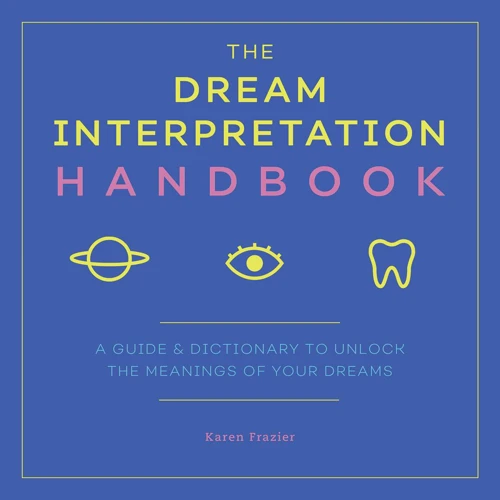
Dream symbols can vary greatly across different cultures, yet there are also common themes that transcend geographical boundaries. In exploring the vast array of cross-cultural dream symbols, we can uncover fascinating insights into the collective human experience. From animals to natural elements, dreams often incorporate symbols that hold deep cultural significance. For example, the snake is commonly associated with transformation and rebirth in several cultures, such as ancient Egyptian and Native American traditions. Similarly, water is often seen as a symbol of emotions and purification in many cultures, including Eastern and Western societies. By examining these shared symbols, we can begin to unravel the universal threads that connect us all, regardless of cultural background or geographical location. So, let’s dive into the rich tapestry of cross-cultural dream symbols and embark on a journey of exploration and discovery.
Common symbols across cultures
Common symbols across cultures serve as a bridge between different societies and their interpretations of dreams. While specific symbols may have varying meanings within different cultural contexts, there are certain symbols that appear universally across cultures. One such example is the symbolism of water. In many cultures, water is associated with emotions, purification, and changes in life. It can represent a sense of calmness, tranquility, and renewal. Another common symbol is the image of a snake. Across cultures, snakes often symbolize transformation, healing, and wisdom. The snake shedding its skin is seen as a metaphor for personal growth and the ability to adapt to new circumstances. Additionally, dreams featuring animals, such as lions, eagles, or wolves, are often seen as powerful symbols with deep spiritual and symbolic significance. These animals may represent strength, courage, or even guidance from the divine. By recognizing these common symbols that transcend cultural barriers, dream interpreters can gain a deeper understanding of the universal aspects of dreams while still considering the unique cultural nuances that shape their interpretation.
Interpretation variations based on culture
Interpretation variations based on culture play a significant role in the diverse ways dream symbols are understood and analyzed. Different cultures have distinct beliefs, values, and traditions that shape their interpretations of dreams. For example, a common dream symbol like a snake may have contrasting meanings across cultures. In some cultures, a snake symbolizes wisdom and transformation, while in others, it may represent danger and deceit. Similarly, colors can hold diverse interpretations depending on cultural context. In Western cultures, white typically symbolizes purity and innocence, whereas in some Eastern cultures, it is associated with mourning and death. These variations highlight the importance of cultural awareness when interpreting dreams, as symbols can have contrasting meanings and implications depending on one’s cultural background. Understanding these cultural nuances allows for a more accurate and nuanced interpretation of the symbolism present in dreams. So, next time you delve into the realm of dream analysis, remember to consider the cultural lens through which the dreamer perceives their symbols and meanings. The rich tapestry of cultural interpretation adds depth and complexity to the fascinating world of dream analysis.
Psychological versus Cultural Interpretation
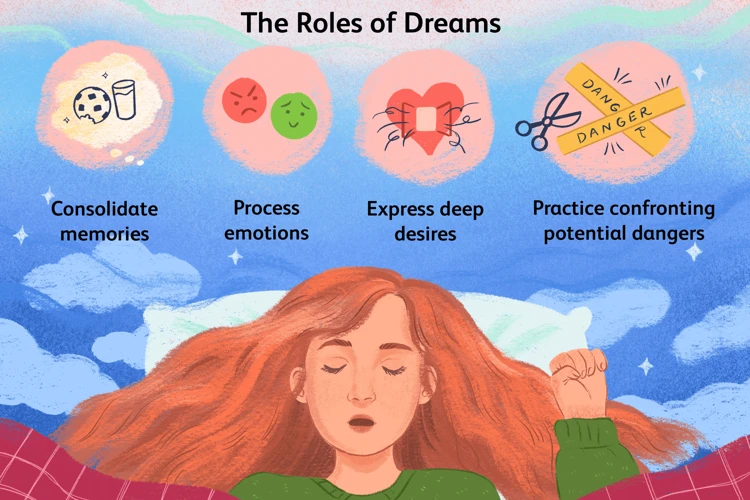
The interpretation of dreams can be approached from different perspectives, specifically psychological and cultural viewpoints. In psychological interpretation, dreams are seen as reflections of the unconscious mind, representing repressed desires, fears, and unresolved conflicts. Psychoanalysts such as Sigmund Freud and Carl Jung have developed theories that focus on the individual’s psyche and analyze dream symbols and themes in relation to their personal experiences. On the other hand, cultural interpretation takes into account the influence of society, traditions, and belief systems on dream symbolism. Each culture has its unique set of symbols and meanings, based on its history, mythology, and collective experiences. This cultural lens recognizes that the interpretation of dreams is not only influenced by individual psychology but also shaped by cultural norms, values, and narratives. Cultural interpretation allows for a broader understanding of dreams, taking into consideration the collective consciousness and shared symbolism within a particular culture. Both psychological and cultural interpretations offer valuable insights into the complexities of dream symbolism, highlighting the interplay between the individual and their cultural context.
Psychological theories of dream interpretation
Psychological theories of dream interpretation offer unique perspectives on understanding the deeper meaning behind our dreams. These theories delve into the inner workings of the human mind and explore how dreams are connected to our thoughts, emotions, and experiences. Here are some prominent psychological theories that shed light on the fascinating process of dream interpretation:
1. The Freudian Theory: Proposed by Sigmund Freud, this theory suggests that dreams are a gateway to our unconscious desires and repressed thoughts. According to Freud, dreams serve as a manifestation of our hidden wishes and unresolved conflicts. Interpretation revolves around symbols and analyzing their underlying meanings to uncover unconscious desires or conflicts.
2. The Jungian Theory: Developed by Carl Jung, this theory emphasizes the collective unconscious and archetypes present in dreams. Jung believed that dreams contain symbols that are shared across cultures and hold universal meaning. By interpreting these symbols, one can gain insight into the individual’s personal and collective unconscious.
3. The Cognitive Theory: Cognitive theorists view dreams as a reflection of our cognitive processes and mental activities. They argue that dreams serve a purpose in consolidating memories, problem-solving, and creative thinking. Interpretation focuses on identifying patterns, themes, and connections that can provide insight into the dreamer’s cognitive functioning.
4. The Activation-Synthesis Theory: Proposed by J. Allan Hobson and Robert McCarley, this theory suggests that dreams are a result of random brain activity during the REM (rapid eye movement) sleep stage. According to this theory, the brain attempts to make sense of these random signals by creating a narrative or storyline. Interpretation focuses on analyzing the elements of the dream narrative and deciphering any underlying emotions or unresolved issues.
5. The Neurocognitive Theory: This theory combines elements of both the cognitive and physiological perspectives. It suggests that dreams are a product of the interaction between brain activation and cognitive processes. Interpretation involves examining the neural processes associated with dreaming and how they relate to the dreamer’s cognition, emotions, and experiences.
Understanding these psychological theories can provide valuable insights into the interpretation of dreams. Each theory offers a unique lens through which we can explore the intricate world of dream symbolism, helping us unlock the hidden messages and meanings within our dreams.
The role of culture in understanding dreams
The role of culture in understanding dreams is profound and multifaceted. Cultural beliefs, values, and social norms shape our interpretations and perceptions of dreams. Here are some key points highlighting the influence of culture:
1. Cultural Symbols: Cultures have their unique symbols and archetypes that may differ from one another. For example, while a snake may represent wisdom and healing in some cultures, it may symbolize deceit and danger in others. These cultural symbols significantly impact dream interpretation within a specific cultural context.
2. Collective Unconscious: Psychologist Carl Jung proposed the concept of the collective unconscious, which suggests that our dreams are influenced by shared cultural experiences and constructs. This collective unconscious encompasses universal symbols, motifs, and archetypes that are rooted in our shared cultural history.
3. Dream Rituals: Many cultures have specific dream rituals and practices that guide the interpretation and significance of dreams. These rituals can include techniques like dream incubation or dream sharing within a group, allowing for a collective exploration and analysis of dreams.
4. Cultural Taboos and Beliefs: Cultural taboos and beliefs can significantly impact dream interpretation. For example, in some cultures, dreaming of certain animals or objects may be considered auspicious or ominous based on cultural beliefs or superstitions.
5. Cultural Narratives: Cultures often have their unique narratives and mythologies that provide a framework for understanding dreams. These narratives contribute to the cultural lens through which dreams are interpreted and understood.
It is important to recognize that cultural interpretation of dreams is not static but evolves over time. Depending on the cultural and historical context, the meanings associated with specific symbols and themes can shift. Understanding the role of culture in dream interpretation requires an exploration of the specific cultural contexts and beliefs that shape our understanding of dreams.
Cultural Factors Influencing Dream Recall
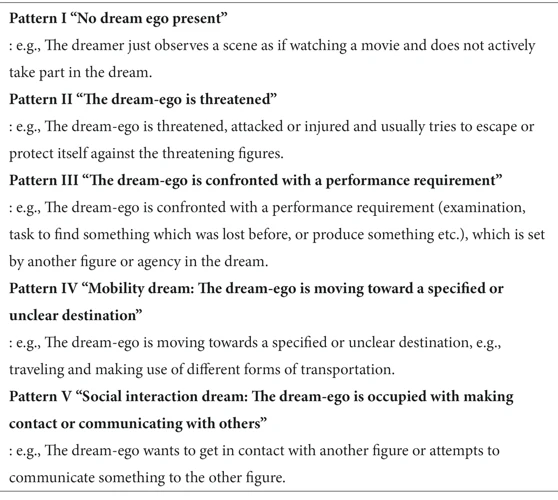
Dream recall, the ability to remember and vividly recount our dreams, is influenced by several cultural factors. Firstly, cultural beliefs and attitudes towards dreams play a significant role. In some cultures, dreams are seen as important messages from ancestors or deities, and there is a strong emphasis on dream interpretation and analysis. This cultural emphasis can lead individuals to pay more attention to their dreams and actively engage in practices that enhance dream recall, such as keeping dream journals or participating in dream-sharing rituals. Secondly, social and environmental factors can impact dream recall. For example, individuals in cultures with high levels of stress or sleep disturbances may have difficulty recalling their dreams due to disrupted sleep patterns. Additionally, cultural taboos surrounding dreams, such as considering dreams as insignificant or unimportant, can also hinder dream recall. By exploring the cultural factors that influence dream recall, we gain a deeper understanding of how our cultural backgrounds shape the way we perceive and remember our dreams.
The impact of cultural beliefs on dream recall
Cultural beliefs play a significant role in shaping our experiences and perceptions, including the way we remember and recall our dreams. Different cultures have varying attitudes and beliefs towards dreams, which can influence the importance placed on dream recall. In some cultures, dreams are considered sacred and are believed to provide guidance from spiritual realms. In such cultures, individuals may be encouraged to actively engage in dream recall practices, such as keeping dream journals or participating in dream-sharing rituals. These cultural beliefs and practices around dreams can enhance dream recall abilities as individuals become more attuned to the messages and insights that may arise during their dream experiences.
On the other hand, certain cultures may discourage or have limited emphasis on dream recall. This can occur when dreams are seen as insignificant or even superstitious. In such cultures, individuals may not prioritize remembering their dreams or may dismiss them as random mental occurrences with no real significance. Consequently, individuals from these cultures may have lower dream recall rates compared to those who come from cultures that value and prioritize dream experiences.
It is important to recognize that cultural beliefs and attitudes towards dreams are deeply ingrained and can greatly impact an individual’s relationship with their dreams. Cultural conditioning can influence the level of importance given to dreams and the extent to which individuals actively engage in practices to enhance dream recall. Understanding and appreciating these cultural nuances is crucial for a comprehensive understanding of dream interpretation and analysis across diverse cultural contexts.
Social and environmental factors
Social and environmental factors play a significant role in influencing our dream recall and interpretation. Our surroundings and the people we interact with on a daily basis shape our experiences, beliefs, and values, which can carry over into our dreams. Social interactions, such as conversations, relationships, and events, can manifest in our dreams, reflecting our emotions and thoughts related to these experiences. For example, if we are feeling anxious or stressed due to social pressures, it may manifest as a recurring theme in our dreams, often symbolized by crowded or chaotic environments.
Additionally, cultural and societal expectations can influence the content and symbolism of our dreams. For instance, in collectivistic cultures where community and family are highly valued, dreams may revolve around themes of familial relationships, duty, and societal expectations. On the other hand, in individualistic cultures that prioritize personal achievement and autonomy, dreams may focus more on personal goals, success, and independence.
Environmental factors such as noise, temperature, and lighting conditions can also impact dream recall. Disturbances during sleep, such as a loud noise or uncomfortable temperature, can interrupt our sleep cycles and disrupt the process of dream recall. Conversely, a peaceful and quiet sleep environment can enhance dream recall and provide a conducive space for exploring the depths of our dreams.
It is important to consider these social and environmental factors when analyzing and interpreting dreams, as they provide valuable context and understanding. By recognizing the influence of our social and physical surroundings on our dreams, we can gain a deeper insight into the complexities of our subconscious mind and how external factors shape our dream experiences.
Exploring Case Studies

Exploring Case Studies takes us on a journey across different cultures to examine their unique approaches to dream interpretation. From comparing dream analysis in Eastern and Western cultures to exploring indigenous practices, these case studies provide valuable insights into how cultural context influences the interpretation of dreams. One intriguing example is Chinese dream interpretation, which has a rich history dating back thousands of years and often focuses on symbols of luck, fortune, and auspicious events. Another fascinating case is ancient Egyptian dream interpretation, where dreams were believed to be messages from the divine and were interpreted by specialized priests called “dream readers.” Native American dream interpretation also offers a distinct perspective, with a focus on nature, animals, and the spiritual connection between dreams and waking life. These case studies highlight the diversity and complexity of cultural influences on dream analysis, deepening our understanding of the ways in which dreams are interpreted and valued around the world.
Comparing dream interpretation across cultures
Comparing dream interpretation across cultures opens up a world of diverse perspectives and beliefs. Here, we delve into the fascinating ways different cultures approach and understand dreams.
1. Eastern culture:
In Eastern cultures such as China and India, dreams are seen as significant and often carry profound spiritual or philosophical meanings. Chinese dream interpretation, for example, considers dreams as messages from the subconscious or even as glimpses into the future. Dreamers may consult dream dictionaries or seek the guidance of spiritual leaders to unravel the symbolism in their dreams.
2. Western culture:
In Western culture, dreams have been analyzed and studied from a psychological perspective, thanks to the influence of renowned psychologist Sigmund Freud. Freud believed that dreams serve as a window into the unconscious mind and harbor hidden desires and traumas. This approach focuses on symbolism, emotions, and the interpretation of dream content as it relates to an individual’s innermost thoughts and experiences.
3. Indigenous cultures:
Indigenous cultures around the world have their own unique interpretations of dreams. Native American tribes, for instance, consider dreams as messages from the spirit world and view them as a form of guidance or prophecy. Dreamcatchers, a well-known symbol in Native American culture, are believed to protect individuals from negative dreams while allowing positive ones to pass through.
4. African cultures:
In many African cultures, dreams are considered direct communications from ancestors or spirits. Dreams are believed to contain valuable insights and guidance for individuals and the community. In some African societies, dream interpreters or diviners play a crucial role in helping individuals understand and navigate the messages embedded in their dreams.
By understanding and comparing these diverse cultural interpretations of dreams, we gain a deeper appreciation for the interconnectedness of human experiences and the richness of individual and collective subconscious worlds. It highlights the intricate ways culture shapes our perceptions, beliefs, and understanding of the dream realm.
How cultural context shapes dream analysis
Dream analysis is deeply influenced by cultural context, as different cultures have unique beliefs, symbols, and values that shape the interpretation of dreams. Cultural context refers to the social, historical, and environmental factors that influence the way people understand and interpret dreams within a specific cultural framework. For example, in some cultures, snakes may be seen as symbols of wisdom and transformation, while in others they may symbolize danger or evil. Likewise, objects or animals considered significant in one culture may hold little or no significance in another culture. Cultural context also plays a crucial role in understanding the emotions and themes present in dreams. For instance, the concept of family and the significance of relationships can vary widely across cultures, leading to different interpretations of dreams related to familial interactions. Cultural values and norms can influence the way dreams are perceived and discussed within a community. In some cultures, dreams may be seen as direct messages from gods or ancestors, while in others they may be viewed as a product of the subconscious mind. Cultural context is a crucial factor in dream analysis, as it shapes the symbols, meanings, and interpretations assigned to dreams within a particular cultural framework.
Cultural Adaptation in Dreamwork

Cultural adaptation plays a crucial role in the realm of dreamwork, as it acknowledges the significance of cultural context in interpreting and understanding dreams. Dreamwork is a therapeutic practice that involves exploring the rich symbolism and narratives within dreams. When working with individuals from diverse cultural backgrounds, it is essential to approach dream analysis with cultural sensitivity and awareness. This entails recognizing that symbols, themes, and meanings within dreams can vary across different cultures. By embracing cultural adaptation in dreamwork, practitioners can honor and respect the unique cultural perspectives and interpretations of dreams. This approach fosters a deeper understanding of individuals and their dreams, promoting inclusivity and enhancing the efficacy of the dreamwork process. So, let us delve into the realm of cultural adaptation in dreamwork, where diverse perspectives intertwine, enriching our understanding of the human experience.
Integrating cultural sensitivity into dream interpretation
Integrating cultural sensitivity into dream interpretation is crucial for understanding and respecting the diverse beliefs and traditions across various cultures. It involves recognizing that dream symbols and meanings can vary significantly depending on a person’s cultural background. Here are some important considerations for incorporating cultural sensitivity into dream analysis:
1. Cultural Awareness: Dream interpreters should have a deep understanding of the cultural norms, values, and beliefs of the individual or group they are working with. This knowledge helps them avoid making assumptions based on their own cultural biases and ensures a more accurate interpretation of dreams.
2. Language and Symbolism: Different cultures have distinct languages and symbols that hold specific meanings. Dream interpreters need to familiarize themselves with the symbolic language of the culture they are working with to accurately interpret dream symbols. For example, a white snake may be seen as a positive symbol in one culture while being regarded as a negative symbol in another.
3. Respect for Tradition: Cultural sensitivity in dream interpretation involves honoring and respecting the traditional practices and rituals associated with dreams in different cultures. Dream interpreters should be aware of these customs and be cautious not to impose their own interpretations or beliefs on the dreamer.
4. Collaboration and Dialogue: Engaging in open dialogue and collaboration with individuals from different cultural backgrounds is essential. This allows for a deeper understanding of cultural perspectives and enables interpreters to provide more accurate and meaningful interpretations that resonate with the dreamer’s cultural context.
By integrating cultural sensitivity into dream interpretation, we can foster greater understanding, inclusivity, and respect for the diverse interpretations and meanings that dreams hold across various cultures. Embracing cultural sensitivity enhances our ability to connect with others on a deeper level and promotes a more comprehensive understanding of the rich tapestry of human dreaming experiences.
Approaches to cross-cultural dream analysis
Approaches to cross-cultural dream analysis involve various methods and techniques for understanding dreams within different cultural contexts. One approach is comparative analysis, where dreams from different cultures are examined side by side to identify common themes and symbols. This method allows for the identification of universal dream symbols that transcend cultural boundaries. Another approach is cultural immersion, where the dream interpreter actively engages with the cultural practices, beliefs, and rituals of a specific culture to gain a deeper understanding of their dream symbolism. This approach acknowledges the uniqueness of each culture and the importance of cultural context in dream interpretation. Additionally, researchers and dream analysts often collaborate with individuals from different cultural backgrounds to broaden their perspectives and gain insights into cultural-specific symbols and meanings. This collaborative approach ensures cultural sensitivity and fosters mutual learning and understanding. Ultimately, approaches to cross-cultural dream analysis aim to bridge the gap between cultures and enhance our ability to interpret dreams through a culturally inclusive lens.
The Future of Cultural Dream Interpretation
As we continue to advance in our understanding of dreams and the influence of culture on dream interpretation, the future holds exciting possibilities for the field. With globalization and increased cultural exchange, there is a growing interest in exploring the universal aspects of dreams that transcend specific cultural boundaries. This includes the identification of common dream symbols and themes that are shared among diverse cultures. Additionally, as technology continues to evolve, we may see the emergence of innovative tools and applications that aid in the analysis and interpretation of dreams from different cultural perspectives. The field of cultural dream exploration has the potential to foster greater cross-cultural understanding and empathy, as we recognize the rich tapestry of beliefs and experiences that shape our dreams. By embracing multicultural perspectives, the future of cultural dream interpretation is poised to unlock even deeper layers of meaning and insight into the human psyche.
Trends in multicultural dream exploration
Trends in multicultural dream exploration have been on the rise in recent years, reflecting a growing interest in the intersection of culture and dream analysis. As our world becomes more interconnected, the significance of understanding dreams within a multicultural context becomes increasingly important. One notable trend is the integration of cultural sensitivity into dream interpretation practices. Dream analysts are recognizing the need to consider cultural nuances and beliefs when interpreting dreams from different cultures. This involves studying and respecting the specific symbols, traditions, and rituals associated with various cultural backgrounds. Another trend is the development of approaches to cross-cultural dream analysis. Dream analysts are exploring methods to bridge the gap between different cultural perspectives and interpretations. This involves fostering open dialogue and collaboration with individuals representing diverse cultural backgrounds, allowing for a richer understanding of dreams and their cultural meanings. The use of technology and online platforms has facilitated the sharing of dreams and interpretations across cultures, leading to a global exchange of ideas and insights. This trend has opened up exciting possibilities for a more holistic and inclusive approach to dream exploration. As dreams continue to captivate and intrigue people worldwide, the future of multicultural dream exploration looks promising with the potential to uncover deeper understanding and meaning in our collective dreaming experiences.
Potential for global dream understanding
The potential for global dream understanding is a concept that holds great promise in bridging cultural gaps and fostering mutual understanding among diverse societies. As our world becomes increasingly interconnected, it is crucial to recognize the universal human experience of dreaming and the common themes that transcend cultural boundaries. By studying and comparing dream interpretation practices from different cultures, we can gain valuable insight into the shared aspects of the human psyche and the collective unconscious. This exploration has the potential to promote empathy and cross-cultural understanding, as we realize that our dreams often echo the same fundamental themes of love, fear, ambition, and spirituality. The exchange of dream interpretations and experiences across cultures can lead to a deeper appreciation and respect for diverse ways of perceiving reality. It opens up a space for dialogue and collaboration, allowing us to learn from one another and expand our perspectives. The global dream understanding has the power to unite humanity through a common language of symbols, emotions, and storytelling, fostering a sense of global community and interconnectedness. As we continue to explore the world of dreams and embrace the potential for global dream understanding, we have an opportunity to create a more harmonious and inclusive world.
Conclusion
In conclusion, the influence of culture on dream interpretation is a captivating and intricate subject. Throughout this article, we have explored how cultural beliefs, traditions, and practices shape the meanings and symbolism attributed to dreams. We have seen that cultural variations exist in dream interpretation, with different cultures assigning distinct meanings to common dream themes and symbols. Religion and spirituality also play a significant role in how dreams are understood, with religious symbolism and shamanic interpretations contributing to the multifaceted nature of dream analysis. Additionally, we have examined specific cultural practices such as Chinese, ancient Egyptian, and Native American dream interpretation, each offering unique perspectives on the significance of dreams. Moreover, we have considered the interplay between psychological and cultural interpretations of dreams, highlighting the importance of considering cultural factors in understanding the depth of dream symbolism. Cultural factors can also influence dream recall, with social and environmental elements affecting an individual’s ability to remember their dreams. Through the exploration of case studies, we have seen how cultural context shapes dream analysis, illustrating the need for cultural sensitivity and adaptability in dream interpretation. Looking towards the future, there is tremendous potential for global dream understanding and the development of a multicultural approach to dream exploration. As we continue to unravel the fascinating connections between culture and dream interpretation, let us embrace the rich tapestry of human experiences and perspectives that contribute to the enigmatic realm of dreams.
Frequently Asked Questions
What is the purpose of dream interpretation?
The purpose of dream interpretation is to uncover the hidden meanings and symbols within our dreams, allowing us to gain insight into our subconscious thoughts, emotions, and experiences.
How does culture influence dream interpretation?
Culture plays a significant role in dream interpretation as it shapes our beliefs, values, and symbolism. Different cultures have varying interpretations of dream symbols, themes, and their significance.
Are there common symbols in dreams across different cultures?
Yes, there are some common symbols in dreams that hold similar meanings across different cultures. For example, water often represents emotions, while falling symbolizes a loss of control or fear.
Can dreams reveal future events?
While some individuals believe that dreams can predict the future, there is no scientific evidence to support this claim. Dreams are often reflections of our subconscious and can provide insights into our thoughts and emotions, but they do not predict future events.
What is the difference between psychological and cultural interpretations of dreams?
Psychological interpretations of dreams focus on the individual’s mental and emotional state, exploring themes such as repressed desires, fears, and unresolved conflicts. Cultural interpretations, on the other hand, consider the influence of specific cultural beliefs, symbols, and traditions on dream meanings.
Can dreams help solve real-life problems?
Some individuals believe that dreams can offer creative solutions to real-life problems by providing fresh perspectives and insights. This is why keeping a dream journal and actively reflecting on dreams can be beneficial for problem-solving and creative thinking.
What is the significance of spirituality and religion in dream interpretation?
Spirituality and religion often play a significant role in dream interpretation. For example, religious individuals may interpret dreams as divine messages or guidance. Similarly, spiritual practices such as shamanism utilize dreams as a means of connecting with the spiritual realm.
Do different cultures have specific dream interpretation practices?
Yes, different cultures have specific dream interpretation practices. For instance, Eastern cultures like China and India have long-standing traditions of dream analysis, while indigenous cultures often view dreams as a means of connecting with ancestors or spiritual forces.
How does culture influence dream recall?
Culture can influence dream recall through its impact on beliefs and attitudes towards dreams. In some cultures, dreams are considered important and are actively discussed and remembered, leading to enhanced dream recall. In contrast, cultures that view dreams as insignificant may not prioritize dream recall.
Are there any future trends in multicultural dream exploration?
As cultural awareness and global connectivity continue to expand, there is a growing interest in cross-cultural dream exploration. This trend is leading to increased research and collaboration, allowing for a deeper understanding of the diverse ways culture influences dream interpretation.








